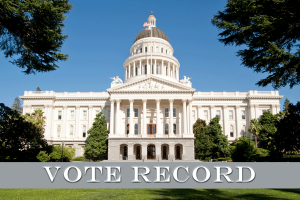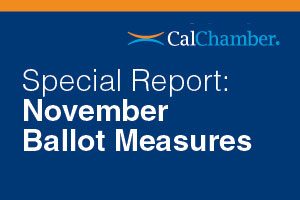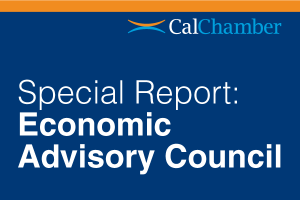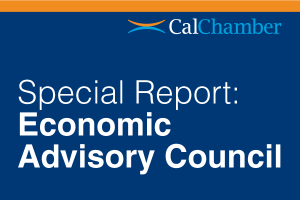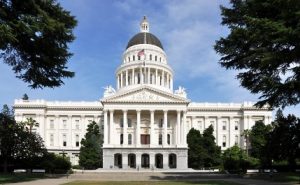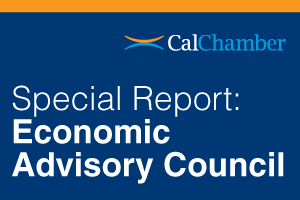Special Report: Economic Outlook Quarterly Report
2025

Risks to Economic Growth Trajectory Include Federal Deficit, Asset ‘Bubble’
(March 14, 2025) For the second time, President Donald Trump is taking the helm of a nation that is already on a solid growth trajectory—one the Wall Street Journal called “The Envy of the World” just eight months ago.
As 2024 drew to a close, the U.S. economy continued to beat expectations. Real gross domestic product (GDP) growth has averaged 3% over the past nine quarters, and preliminary data for the last quarter of 2024 suggests little change in that momentum, with growth expected to land in the mid-2% range. The big question is how Trump’s win might change this trajectory.
2024

Social Narratives, Reality, Economic Data and How They Mesh with Election Results
(December 20, 2024) The red wave that swept Donald Trump to a second term took most everybody by surprise. Unsurprisingly, the big win has sparked vitriolic finger-pointing within the Democratic Party, a sense of elation within the Republican Party, and panic in political pollster circles, where yet another big miss has been notched.
However, it’s easy to over-interpret what this means for the U.S. economy and “our democracy” moving forward. Many are interpreting this sweeping election win as a mandate to enact the Republican’s platform. Yet a cursory look at the data shows it is more likely a reflection of voters acting on that age-old question: What have you done for me lately?

State Economic Challenges Reflect Policies Affecting Labor Market, Housing Supply
(September 20, 2024) In March of this year The Economist ran an article with the headline “California is gripped by economic problems, with no easy fix. Rising unemployment, a growing deficit and persistent outmigration are a painful trinity.” The article concludes that the state is a weak spot in the middle of an otherwise healthy U.S. economy.
Although the picture is more complex than the headline implies, there is little doubt that California is not doing as well as it has in the past. The only substantial argument is over why the state is faring so poorly, and the depth of the rot.

Data Show Positive Economic Trends; Housing, Labor Supply Shortfalls Continue
(May 17, 2024) The U.S. economy entered 2024 at a good pace. Consumer spending continues to hum along, inflation has cooled, asset markets have surged to record high levels, and the pain felt in the banking and real estate sectors due to interest rates has been offset by surprisingly solid trends in construction.
All of this suggests that the current economic expansion will not end anytime soon. And as goes the U.S. economy, so goes California’s. As big an economy as California is from a global perspective (fifth or sixth, depending on how you count it), the state still accounts for less than 15% of total U.S. output. As such, good economic conditions at the national level will keep California’s economy moving as well. The key question revolves around the quality of that growth.
2023

Consumer Spending, Labor Market Cool; Inflation Pattern Seems Similar to 1970s
(December 18, 2023) AI excitement has affected performance and valuation. The 7 Tech Titans have produced an average return of 88% in 2023 as investors chase the AI theme. In contrast, the remaining Standard & Poor’s (S&P) 493 stocks have produced a modified market cap-weighted return of only 1%.

Strength, Resiliency in Some Sectors Offset by Small or Negative Gains in Others
(September 15, 2023) Following a steep sell-off in the first half of 2022, the Standards & Poor 500 started 2023 with an impressive +15.9% first half return, ranking as the second strongest first half return since 2000, behind only 2019 and ahead of 2021.

Can Fed Bring Down Inflation Without Pushing Economy Into Deep Recession?
(May 26, 2023) One more rate hike and then pause? Leading economic indicators have turned deeply negative. Inflation is down to 5% from the high of 9.6%. Markets are now pricing in rate cuts before year end.
The Fed could and should pause here, but may not. This has been the fastest rise in rates in history, and there usually is a lag between rate increases and economic slowdown observable through data.

High Inflation, Interest Rate Hikes of 2022 Not Reflected Yet in 2023 Economic Data
(March 17, 2023) Markets faced several challenges in 2022, including high inflation, historic central bank policy, the war in Ukraine, and COVID lockdowns in China. Inflation was a major factor in the markets throughout the year, with the headline consumer price index reaching a 40-year high of 9.1% in June.
2022

Goods Inflation Declining, Services Rising; Federal, State Labor Markets Still Strong
(December 16, 2022) The pace of economic growth continues to moderate, primarily driven by a slower pace of consumption, which accounts for about two-thirds of gross domestic product (GDP). We do not believe the economy is in a recession yet, but the planned aggressive actions by the Federal Reserve to raise interest rates and reduce the size of its bond holdings may put the economy into a recession in 2023.

Federal Reserve Fights Inflation, Walks Line Between Soft Landing, Recession
(September 28, 2022) It is not officially known whether the economy is in a recession. The National Bureau of Economic Research (NBER) is the self-appointed arbiter of the American business cycle and has been dating recessions for almost a century. They are precise with the start and end dates of a recession, but they are not timely when announcing when a recession happens.

Economic Expansion Continues Steep Pace; Demand for Workers Exceeds Job Seekers
(June 10, 2022) Gross domestic product (GDP) took a surprising decline in the first quarter of 2022, falling 1.4%. It was brought down by the trade deficit widening and a slower pace of inventory growth. However, the pace of consumer spending remains strong, increasing 2.7% quarter over quarter.

Economic Recovery, Job Growth Faster than Previous Recessions; Inflation Robust
(March 18, 2022) When conducting monetary policy, the Federal Reserve has two goals: keep inflation low and stable, and ensure maximum employment. For most of last year, inflation was consistently above its target rate of 2.0%. But they believed they were far from meeting the goal of maximum employment, so they kept short-term interest rates low until they could meet that objective.
2021

Economy’s Fundamentals Remain Firm; Household/Corporate Balance Sheets Solid
(December 17, 2021) Economic recoveries and expansions never go as planned. This one is no exception. It has been marred by two major COVID outbreaks, supply shortages, supply chain bottlenecks, and higher prices. These impediments will linger for some time. But despite these headwinds, the economy’s underlying fundamentals remain firm, supported by solid balance sheets of households and corporations.

Strong Demand for Goods; Supply Lagging; Imbalance Keeps Upward Pressure on Prices
(September 17, 2021) The recession is officially over. It ended more than a year ago, but it takes time for the group of economists at the National Bureau of Economic Research, the organization that determines peaks and troughs of a business cycle, to wait for all the revised economic data to formally determine the start and end of recessions. Report PDF

As Economy Lifts Off, Transitory Hiccups in Some Sectors, Inflation Factors to Watch
(May 24, 2021) The parade of robust economic data continues to march onward. The data at the end of the quarter, following the February chill, has been explosively strong. It is starting a wave of powerful momentum that we believe will continue for several quarters. Report PDF

Economic Positives Tempered by Risks Like Virus Uncertainties, Debt Worries
(March 19, 2021) One, Two, Three, Cha Cha Cha
No, this is not economics by Arthur Murray, but the process for getting the economy back on track is pretty simple, with the outlook being spectacular. Report PDF
2020
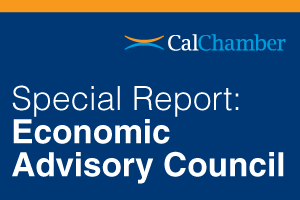
To ‘V’ or Not to ‘V,’ That is the Question…
(September 2020) The COVID-19 induced recession of 2020 began with the ferocity of an unexpected tsunami smashing onto the shore—one month the economy was fine, the next it was in freefall.
Report PDF

Post-COVID-19 Economy: Case for the ‘V’
(June 2020) The good news is that the number of new, confirmed cases of the coronavirus in the United States has, at least for now, peaked and appears to be falling. Stay-at-home mandates across the nation have been having their intended effect of limiting the spread of the virus beyond the initial surge. Report PDF

No Slowdown Before the Election Hoedown
(March 2020) This year’s Lunar New Year ushered in the Year of the Rat on the Chinese calendar. The past year, the Year of the Pig, might more fittingly be labeled “year of the bear” given the number of grim outlooks for the U.S. economy that were offered up by economists and pundits. Report PDF
2019

U.S., State Economies Show Steady Growth; Political Rhetoric Disconnected from Reality
(December 2019) When we look back at 2019 there will be plenty of negative memories—from the theatrics that have dominated national politics to the ongoing trade war with China to the unnecessary crisis of confidence that exists within our borders to grim tidings on the international front as the result of a slowing European economy to deepening political crises in the Middle East. Report PDF

Record Economic Expansion Near; Housing Costs Dampen State’s Dynamism
(September 2019) While still savoring the fact that the U.S. economy is in the midst of a record-breaking expansion, attention has suddenly shifted to questions about when the next recession will begin.
Admittedly, there are a number of mounting concerns: U.S. trade conflicts, weaker global economic conditions, Brexit, and the inverted yield curve.
Still, despite the uncertainty that has fueled these concerns, and despite chronic homegrown problems with respect to the labor force and housing, California’s economy has performed solidly through the first half of the year, and will stay on track into 2020. Report PDF

Record Economic Expansion Near; Housing Costs Dampen State’s Dynamism
(May 2019) The stock market sell-off that began at the end of 2018, combined with certain weaker-than-normal economic data, has caused the usual set of perma-bearsto predict, yet again, the end of the current U.S. economic expansion.
Beacon Economics is not inclined to agree. We simply do not see imbalances that could cause the kinds of rapid shifts in the economy that would precipitate a recession. Report PDF

U.S. Growth Pace Slowing, Housing Flat; State Solutions Require Urgency, Patience
(March 2019) Looking back, 2018 was clearly a solid year for the U.S. economy, with vastly more positives than negatives to reflect on. The nation’s economy grew by 2.9% in real terms over the year. Acceleration in growth occurred almost across the board, but the greatest contributions came from government and business investment. Exports had a good year despite ongoing trade disputes with key partners. Report PDF
2018

Data Showing Balanced Growth Contrasts with Public Pessimism on State of Economy
(December 2018) The 2018 midterm election is finally behind us, and proved to be just as dramatic as would befit today’s hypercharged political environment. Moreover, the final results pretty much assure that the drama coming out of Washington, D.C. will not lessen over the next two years of the Trump administration.
Indeed, without even taking a breath, it feels as if we are already in the run up to 2020. Will the Democratic takeover continue? Will the Republicans be able to hold the Senate and/or the Presidency? Report PDF

U.S. Economic Expansion Continues, But Growth Surge May Be Temporary
(September 2018) Far from losing steam, the U.S. economy has been on a solid upswing lately. But as always, a deeper look at the data suggests that there are issues to keep an eye on, according to a recent report by the California Chamber of Commerce Economic Advisory Council.
The United States is currently in the midst of the second longest expansion in the nation’s history at 111 months and counting. In July of next year, we will officially be in the midst of the longest expansion on record. Report PDF

Housing Shortage Among Top Challenges for Long-Term Health of State Economy
(June 2018) The U.S. economy has experienced steady growth in recent years, and later this year, the current economic expansion will become the second longest on record. Throughout much of this expansion, California has outpaced the nation and many states in terms of economic growth and job gains, and improvements in its unemployment rate, fueled by strength in many of its key industries.
California will continue to lead the United States in 2018, making this year an opportune time to take on both current and long-term challenges. Report PDF

U.S., State Economic Stability Contrasts with Turmoil on Social, Political Fronts
(March 2018) Growth came in at 3% for the second quarter of the year (the best since the first quarter of 2015), making up for a relatively weak first quarter, and the outlook for the rest of the year remains in the 2.5% range.
The state’s unemployment rate is on track to finish 2017 below 5% for the first time in 11 years. California’s unemployment rate is higher than the U.S. rate, but the differential between the two is now at its lowest in more than 10 years. Report PDF
2017

Worker Shortage, Chronic Lack of Housing Constrain Potential for California Growth
(December 2017) An array of evidence points to the fact that the California economy has been humming along nicely, and that is expected to continue in the coming year, although the state must face long-term challenges, and the sooner the better, according to a recent report by the California Chamber of Commerce Economic Advisory Council..
Overall, Beacon Economics expects the U.S. economy to grow faster in 2017 than during the last two years. And the outlook for 2018 looks remarkably similar, short of some major change in government policy. Report PDF

State Economic Growth Slows; Constraints Include Labor, Housing, Uncertainty
(September 2017) Like the U.S., California’s economy continued to roll forward in the first part of 2017. The unemployment rate edged down, nonfarm jobs maintained an upward trajectory and grew at a modest pace, and economic activity in the state advanced at a somewhat faster rate than the nation as a whole. Report PDF

Disruption in Washington, D.C. Heightens Economic Uncertainty in California
(June 2017)The California economy remains on track despite the uncertainty created by the disruptive political environment that has characterized the early months of the Trump administration, according to a recent report by the California Chamber of Commerce Economic Advisory Council.
With the midpoint of the year fast approaching, two distinctly opposing trends have formed in terms of the U.S. economy’s outlook for the year. On one hand, the nation’s economy is clearly picking up momentum after a year of slow growth in 2016. On the other hand, the policy uncertainties created by the Trump administration have only become worse as it moves into its fifth month. Report PDF

Uncertain Political-Economic Environment Spawns California ‘Rogue One’ Reactions
(March 2017) The political-economic environment went from unsettling in the aftermath of the November election to disruptive when President Donald Trump assumed the Oval Office, as the new president moved with lightning speed to sign a string of executive orders that embodied his campaign promises.
The administration soon discovered that signing an executive order is easy compared to execution, at which stage it must answer to the U.S. Congress, the courts and the states. Report PDF
2016

U.S. Outlook About to Get Bumpy; State Initiatives Have Tax Implications
(December 2016) The election that put Donald Trump in the White House in 2017 was a shock to the vast majority of pollsters who were predicting a win for Hillary Clinton. The outcome also is a shock to the staff at Beacon Economics whose economic outlook over the last year has implicitly been based on the (incorrectly) predicted outcome of a Clinton win. Report PDF

Economy Pushes Through Global Turbulence; State Still Among Fastest Growing in U.S.
(September 2016) The California economy, like the nation overall, slowed its pace of growth over the past year. Still, the state remains one of the fastest growing economies in the nation, according to the latest quarterly report from the California Chamber of Commerce Economic Advisory Council. Report PDF

California Poised for Economic Growth; Housing Affordability Challenge Emerges
(May 2016) The U.S. economy started off on a down note in 2016, with gross domestic product (GDP) growth slowing to a paltry 0.4%, even as the financial and commodity markets have continued their wild ride. The global commodity glut and the slowing world economy are the proximate drivers of the weak numbers. Report PDF

California Economy: Still Outpacing the Nation
(March 2016) The California economy, like the nation overall, slowed its pace of growth over the past year. Still, the state remains one of the fastest growing economies in the nation, according to the latest quarterly report from the California Chamber of Commerce Economic Advisory Council. Report PDF
2015

State Job Growth Outpaces Nation; Inland Lags Behind Tech-Driven Coastal Areas
(December 2015) The state’s economic recovery has been extremely uneven, with the strongest growth coming along the coast, particularly in areas benefiting from the state’s leading position in the rapidly growing information technology and life sciences sectors, according to the latest quarterly report from the California Chamber of Commerce Economic Advisory Council. Report PDF.

Economic Advisory Council: Despite Drought, Challenges, California Continues Strong Economic Growth
(September 2015) The report indicates that while challenges such as a high cost of living, regulatory burdens and a spotty housing recovery continue to plague the state, California’s overall numbers remain strong. The unemployment rate has fallen 1.2 percentage points to 6.3%, with 482,000 net new jobs added over the last year. Tourism is another bright spot in California’s economy, as neither the stronger dollar nor slower economic growth overseas has yet to cut into the flow of international tourists into the state. Report PDF.

(June 2015) California’s economy appears to be maintaining strong momentum through the first few months of 2015, even though the state’s economy continues to be impacted by a whole host of challenges, ranging from the unending drought to the work stoppages at major port facilities earlier this year, according to the latest report from the California Chamber of Commerce Economic Advisory Council. Report PDF

State Economy Strengthens in Face of Port, Drought, Domestic Outmigration Challenges.
(March 2015) California’s economy appears to be maintaining strong momentum through the first few months of 2015, even though the state’s economy continues to be impacted by a whole host of challenges, ranging from the unending drought to the work stoppages at major port facilities earlier this year. Although the council expects California’s economy to continue to grow, the state is not without its challenges. Growth has moderated recently, and the tremendous surge in tech-related hiring and associated construction projects is unlikely to be sustained longer term. Retailers and financial services firms are still posting only modest gains. Report PDF.
Recent Reports
Connect
Get notified of latest news and reports:
